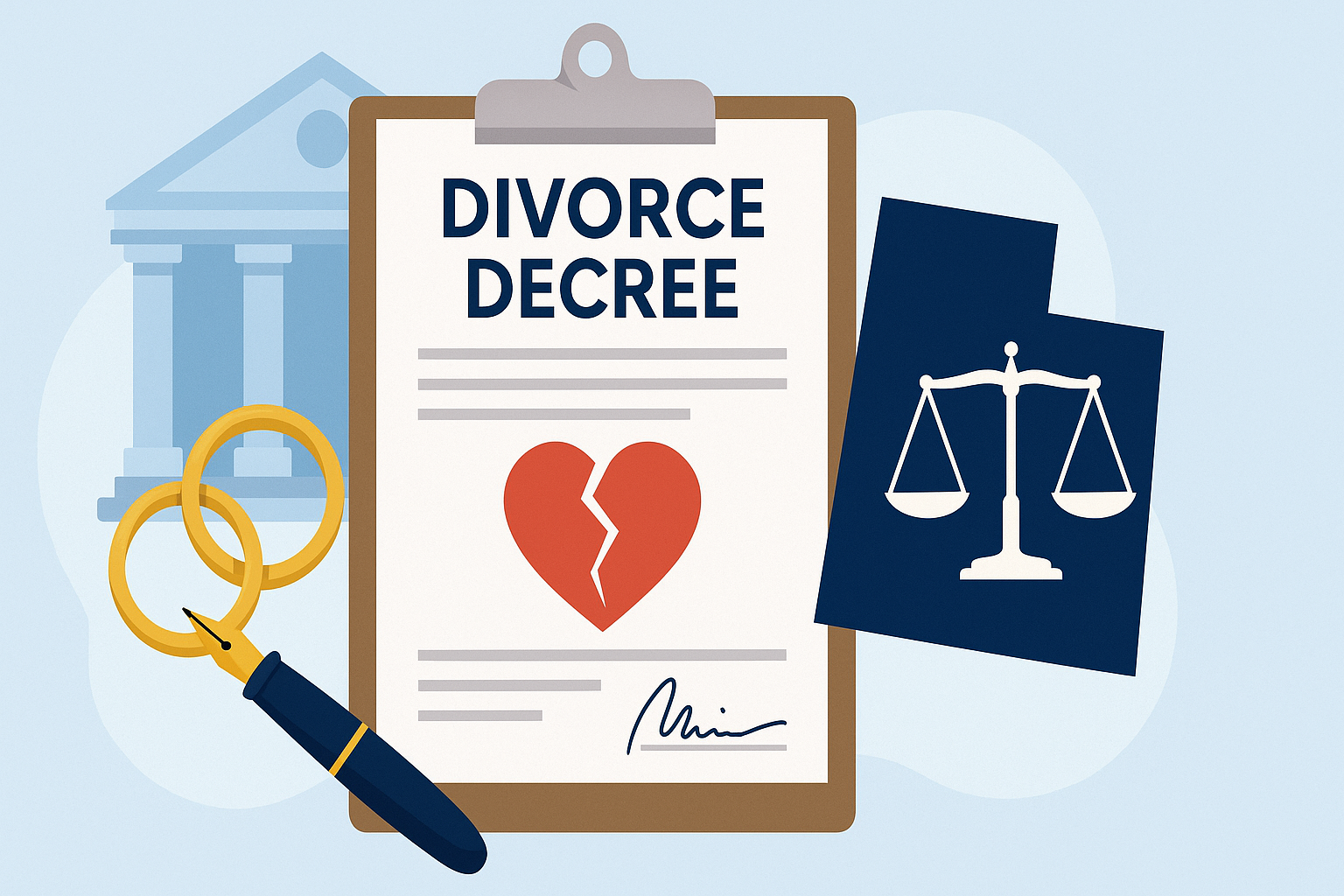How to File for Divorce in Utah (Step-by-Step Guide)
Divorce is one of the most significant legal decisions a person can make. In Utah, the process has clear requirements, multiple stages, and important deadlines. Whether you represent yourself or work with an attorney, understanding the steps can save time, reduce stress, and protect your rights.
Why This Utah Divorce Guide Matters
Utah divorces move through predictable phases: residency, filing, service, disclosures, courses for parents, mediation, then finalization. Each phase has rules and timelines that affect outcomes like custody, property, and support. Use this page as a plain-English roadmap so you can move forward with clarity.
Quick Overview of the Process
These are the major milestones from start to finish.
Residency
At least one spouse lived in Utah 3+ months in the filing county. With minor children, Utah residency is usually 6 months.
File the Petition
Submit the Petition for Divorce and required forms online or at the district court. A case number is assigned.
Serve Your Spouse
Use sheriff/constable or a private process server. Your spouse has 21 days to respond in Utah, 30 days if out of state.
Financial Disclosures
Exchange financial declarations within 14 days after the Answer. Full, accurate disclosure is required.
Courses, Mediation, Finalization
Parents complete required courses. Mediation is typically required. After the 30-day wait, the judge can enter a Decree.
Key Forms and What They Do
Have these ready as you move through the steps.
Petition for Divorce: Starts the case and states what you want the court to decide.
Summons: Official notice to your spouse that the case has been filed.
Vital Statistics Form & Cover Sheet: Court intake details for domestic cases.
Financial Declaration + attachments: Income, assets, debts, and tax returns for fair decisions on support and property.
Utah Divorce Timeline & Deadlines
| Step | Deadline | Notes |
|---|---|---|
| Residency | 3 months in filing county (6 months for children) | Confers jurisdiction to Utah courts. |
| Response to Petition | 21 days (30 days if out of state) | No response can lead to default judgment. |
| Financial Disclosures | Within 14 days of Answer | Incomplete disclosures can trigger penalties. |
| Waiting Period | 30 days from filing | May be waived for good cause by the court. |
| Parent Courses | Before finalization | Required if there are minor children. |
| Mediation | Before trial | One session typically required unless excused. |
Step-by-Step: Filing for Divorce in Utah
Meet Utah Residency Requirements
One spouse lived in Utah 3+ months in the filing county. With children, they generally lived in Utah 6+ months.
Prepare and File the Petition
File online or at the district court. Typical filing fees are around $325. Fee waivers may be available.
Serve the Divorce Papers
Use sheriff/constable or a private process server. You cannot serve your spouse yourself.
Exchange Financial Disclosures
Share income, assets, debts, and tax returns within 14 days after the Answer is filed.
Complete Required Courses (If Children)
Both parents complete Utah’s Orientation and Education courses and file the certificates.
Attend Mediation
At least one session is typically required unless excused. Agreements can be submitted to the judge.
Finalize the Divorce
After the 30-day waiting period, submit final papers for the judge to enter a Decree of Divorce.
Talk to Gibb Law About Your Utah Divorce
We help clients file correctly, meet deadlines, and avoid costly mistakes. Get clear next steps on custody, support, and property division.
Schedule a ConsultationMultimedia Resources
Multimedia Resources
Watch or share these explanations of the Utah divorce process.
YouTube Videos
Instagram Posts
Common Mistakes to Avoid
Filing in the wrong county or before meeting residency requirements.
Improper service of process or missing response deadlines.
Incomplete or inaccurate financial disclosures.
Skipping required parent courses or mediation when applicable.
Using generic forms without adapting them to Utah law and your facts.
Related Utah Statutes and Rules
Utah Code §30-3-1 to §30-3-18: Divorce and Separation
Utah Rules of Civil Procedure, Rule 4: Service
Utah Code §30-3-11.3: Divorce Education Requirements


